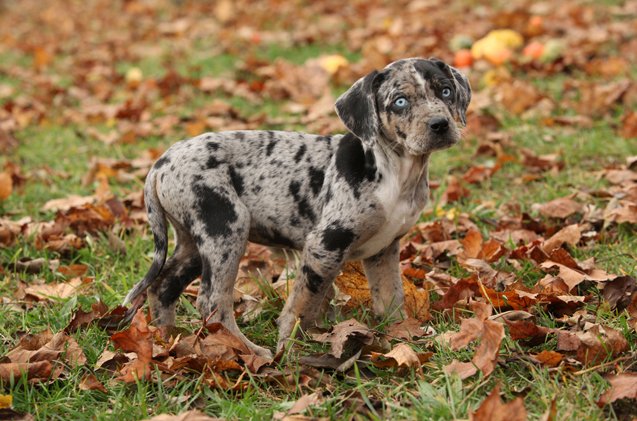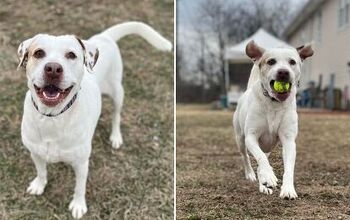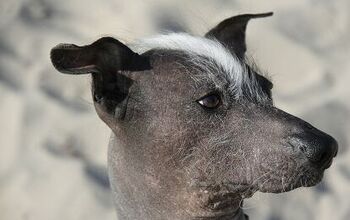Catahoula Leopard Dog


About Catahoula Leopard Dog
Some dogs want nothing more than to laze around in their owners lap or play all day. Other dogs aren’t so frivolous in their desires. Some dogs like to work and find it impossible to feel content without enough work in their lives. The Catahoula Leopard Dog is one such pooch. This dog is driven and has a work ethic that many humans lack. He is happy to go running with his owner, but his true love is hunting down wild boars deep in the swamps of Louisiana. Although the Catahoula Leopard Dog loves his people and can make a great family pet, these dogs are quite independent and willful. That means that only a certain type of owner is suited to taming the Catahoula Leopard Dog. This breed is not for the first-time dog owner and requires a gentle but assertive person to train and handle him.
However, with proper socialization and early training, Catahoula Leopard Dog will not be aggressive, stubborn, or aloof. They will be great companions and a loyal friend to their family to the very end. Even so, these are not cuddly and goofy canines that will seek the couch or become velcro dogs. These are dogs who need a specific task or purpose in their lives to keep them happy.
This is primarily a working dog breed. So you can expect a Catahoula Leopard Dog to be active, serious, and task-oriented. These unusual looking dogs are not just hunters by nature either. The Catahoula Leopard Dogs excel as stock dogs, bay dogs, tree dogs, watchdogs, and even guard dogs. They can do just about any typical working dog task. As long as they have a clear task, they will do it with dedication. Needless to say, this US breed is not a good fit for apartment or owners who prefer their dogs to be lazy. It takes a certain type of owner to tame and please this animal, but that owner will have a best friend for life. To find out if you have what it takes to bring a Catahoula Leopard Dog in your family, read on. We’ll reveal everything that you need to know about this amazing pooch. All you need to do is keep scrolling and reading.
The Catahoula Leopard Dog is driven and has a work ethic that many humans lack.
The Catahoula Leopard Dog was originally established in the Northern part of the wet and wild state of Louisiana, close to the Catahoula Lake. To this day, these spotted dogs are the only breed in history that originates from this state. It’s a unique dog from a unique part of America. While Catahoula’s importance in his native region is undeniable, its true origin is unclear. There are a few theories surrounding this unusual breed, but two seem to be most popular. One is that the Catahoula Leopard Dog was first bred by Native Americans in the 16th century, who crossed their own dogs with the settler’s Greyhounds and Molossers. The other theory proposes that French settlers bred their Beauceron dogs to Native Americans’ blue-eyed canines. Regardless, this special hybrid came as a result of the same unique mix of cultures that make Louisiana such a remarkable place.
Whatever the real story is, it’s clear that the many distinct qualities of these dogs ensured they’ve retained popularity in the region even centuries later. The Catahoula Leopard Dog was developed because of his intense work ethic as well as its ability to hunt wild hogs and feral cows, but has continued to reign supreme in Louisiana because it’s just an all-around fantastic canine. Whether as a pet or a working dog, Catahoula Leopard Dog is sure to impress you. There’s simply no other pooch out there quite like this one.
While we can’t be certain of the exact parentage, it is believed that the Catahoula Leopard Dog is a combination of Bloodhounds, Greyhounds, various Mastiffs and a host of local dogs. This breed, which is native to the United States, has been the state dog of Louisiana since 1979. Everyone in the region loves these dogs and the rest of America is slowly starting to discover the state’s most beloved furry companion.
High-quality, dry dog food that is specifically designed for hunting or high-energy dogs is essential to the proper nutrition of a Catahoula Leopard Dog. Dry food will help to keep the dog’s teeth and gums healthy as well as cut down on dental issues and bad breath. Feeding the Catahoula Leopard Dog twice daily is recommended by many breeders as bloat can be a problem within the breed. Since this is such a unique breed of dog, very few standardized feeding guides have been designed with the Catahoula Leopard Dog in mind. For that reason (amongst others), it’s wise to consult with your veterinarian before determining or changing your dog’s diet. Only a vet familiar with your animal is qualified to judge their specific dietary needs. So, always check in before making any big changes to what your Catahoula Leopard Dog eats to avoid any unpleasant surprises.
Catahoula Leopard Dogs must have proper training in order for them to be happy and have the ability to live alongside of their human families.
Catahoula Leopard Dogs must have proper training in order for them to be happy and have the ability to live alongside of their human families. This is not the breed of dog for passive people. It is essential that the family that incorporates a Catahoula Leopard Dog into the household be assertive and unyielding when it comes to the dominance within the pack. The dog must completely understand that the humans in the pack are ranked higher than he is or all hell could break loose. This doesn’t mean that he should not be loved or treated as a family member; he simply must know his place within the household. An alpha relationship must be established early and training should be approached with a firm, yet friendly hand.
This breed is highly intelligent and takes well to training. For training to be effective, the lessons should be short, repetitive and calm. Yummy treats will be a great reward for a task well done. It’s important to establish a training routine early and often. This is not a dog that will be easily trained by first-time dog owners. In fact, enrolling this pup in some sort of training and/or obedience program is likely for the best. These are loyal and lovable animals once trained, but if this process isn’t handled properly during the pup’s young and impressionable years, the Catahoula Leopard Dog can be a tiny terror.
The average Catahoula Leopard Dog weighs somewhere between 50 and 90 pounds and are between 20 and 26 inches tall at the withers. Of course, females tend to be smaller than males.
If bred properly, the Catahoula Leopard Dog is not aggressive toward people. However, they are watchful and cautious when strangers are around. They do have an assertive nature so they need an owner or family that is assertive as well. Passive owners will quickly lose their Alpha status and the dog will end up ruling the home. This is unacceptable, so it is important to realize that although the Catahoula Leopard Dog is wonderful, he is not the right dog for everyone. Only a certain type of owner can handle this particular animal.
Not an incessant barker, the Catahoula Leopard Dog will surely alert his family of strangers or cars approaching. He will also alert when other animals approach and oftentimes, will attack animals that do not belong on your property. This will include other pets that accidentally get out of their homes and make their way to yours. In other words, this isn’t exactly a dog that will do well in an apartment building or in any area densely populated with other pets.
As with many large breeds of dogs, the Catahoula Leopard Dog is predisposed to hip dysplasia. Even a litter out of two adult dogs that are known to be free from hip dysplasia can result in 25 percent of the puppies having some level of hip dysplasia. To reduce the incidence of hip problems, puppies should have limited exercise and not be allowed to run and play on tile floors or with adult dogs until they are older and more stable.
Deafness can be an issue with Catahoula Leopard Dogs. Health clearances on the parents can help to decrease this problem within the breed, but there are no guarantees. Deaf dogs can lead happy lives. They just need to use hand signals and other alerting methods for working with the dog. It’s important to schedule regular checkups with your vet so that any potential health issues can be identified and treated early.
The average Catahoula Leopard Dog lives between 12 and 13 years.
Catahoula Leopard Dogs are high-energy and athletic dogs that were bred to herd wild boar and cows. They need serious exercise that not only gets their bodies moving but also stimulates their minds. A stroll through the park just isn’t enough for the average Catahoula Leopard Dog. He needs to use his skills and inherent drive to work. His work ethic is strong and unstoppable. The Catahoula will not be happy unless he has a productive job to do. These dogs need owners who can keep up with them, not the other way around.
This breed attaches to his human family quickly and does not thrive living outdoors or inside of an outbuilding. He needs to be close to his family as the Catahoula Leopard Dog needs attention and affection from his loved ones. It is also his desire to protect his family from harm and as a result, he must live in the house with his humans.
Catahoula Leopard Dogs are watchful and cautious when strangers are around.
The Catahoula Leopard Dog is not recognized by the AKC, but it is a part of their Foundation Stock Service. This program allows breeders of rare dogs to record the birth and the family trees of their litters, as they are working to create a fully established dog breed. This only works if the dog is a purebred (like the Catahoula Leopard Dog). The goal is to increase the numbers of the said rare purebred dogs, and fulfill AKC set requirements to eventually get full recognition.
The American Kennel Club states “The Catahoula Leopard Dog is a multi-purpose working dog that is well-muscled and powerful, but with a sense of agility and endurance. They are serious while working and playful at home.”
The coat of a Catahoula Leopard Dog is short. Usually, the dog is black and tan or merle. Some of these dogs’ coats are rather coarse and for the most part, they are tight. Their eye color can vary drastically and it is not uncommon for a dog to have two different colored eyes or even a single eye that has two colors. These are dogs with dramatic eyes. You will notice those peepers, whether you like it or not.
Catahoula Leopard Dogs should be bathed seasonally or when they become filthy or smelly. A weekly brushing will help to remove loose dirt and debris from the coat. They shed minimally but while they are shedding, brushing should be done several times each week.
Catahoula puppies are cute, energetic and mischievous. The same as any other puppy, really. However, their cuteness shouldn’t be an excuse to let them walk all over you. You need to set the foundation for your future relationship early on and establish yourself as the alpha. It’s never too early to start slowly training your new pet, even if it is only baby steps in the beginning!
Puppies should absolutely start being socialized as soon as they are brought to their new homes. They should also begin formal puppy kindergarten once their vaccines are completed. This will help them to become wonderful and functional members of your family.
Photo credit: Zuzule/Shutterstock

Amy Tokic, Editor of PetGuide.com, is a passionate animal lover and proud pet parent of Oscar, a Shih Tzu/Chihuahua cross, and Zed, a Japanese Chin. Her love of animals began in kindergarten, when she brought her stuffed dog Snoopy into class with her every day. Now, she writes about her adventures in pet ownership and tirelessly researches products, news and health related issues she can share with other animal enthusiasts. In her free time, Amy loves perusing used book and record stores, obsessing over the latest pet products available and chasing squirrels with wild abandon (a habit attributed to spending too much time with her pooches).
More by Amy Tokic

























